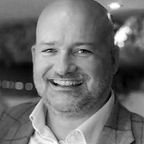Making Beautiful Music with SAM
What’s the difference between SAM and Audit Defence?
Are they the same thing? Are they symbiotic? Does one discipline contain the other? Why should you care?
Simple answers are Yes, Yes, It should do... Let me explain!
Let’s consider an orchestra. What constitutes such a thing? It’s a group of musicians who are uniquely and independently skilled at their own specialism and who combine together to make beautiful music or as the OED tells it:
There are sections within the orchestra that specialise in specific musical instruments grouped into type, e.g. brass, woodwind, percussion and strings. Each group is focused on the quality and success of their own personal delivery but also has a vested interest in the success of their section and ultimately the success of the orchestra. When they all play together the music can be a beautiful thing.
What would happen if we shuffled the musicians around a little and asked them to play a different instrument? Would the music still be beautiful or would the quality of the output suffer?
Obviously, the output would suffer. There may be some success given that it’s reasonable to assume that a trumpet player could probably make a good fist of playing a flugelhorn horn but what about a trombone? A violin? A saxophone? A grand piano?
Probably not going to be making beautiful music anymore!
Even if we don’t mess with the musicians by shuffling them around and asking them to play different instruments, they still won’t make beautiful music without one key ingredient, the conductor.
Conducting is the art of directing a musical performance, such as an orchestral or choral concert. It has been defined as “the art of directing the simultaneous performance of several players or singers by the use of gesture.”
What’s this got to do with SAM and Software Licensing?
Simply put, it nicely illustrates the relationship between SAM methodologies and processes and the unique skills and knowledge of license consultants.
It is highly unlikely that an expert Oracle licensing consultant who knows the intricacies of something like Primary Usage would be able to also know when they need Core CALS, Server CALS, Software Assurance etc… or how to navigate the complexities of sub-cap licensing! It’s just too much information to hold. Sure some people will tell you they are multi-discipline and I’m sure they are, but not to the depth that they will need to be. Every license specialist has a preferred supplier, the one they cut their teeth on usually, and to ask them to work on another vendor in which they’re not as experienced is a waste of valuable resources.
Having multiple people skilled in the intricacies of each vendor is fine and dandy, but how do you orchestrate their work? How do you roll up the measurement of their value? How do you control the non-vendor-specific parts of software management?
SAM methodologies and processes are the glue that binds these things together. Implemented by the SAM manager who has final responsibility for the outcomes of the programme.
A cohesive SAM strategy relies on three things: people, processes and technology.
Or should I say, musicians, music and instruments?
You need all three to make beautiful music.
About The Author
Jason Pepper is the Head of SAM Practice here at Version 1.
